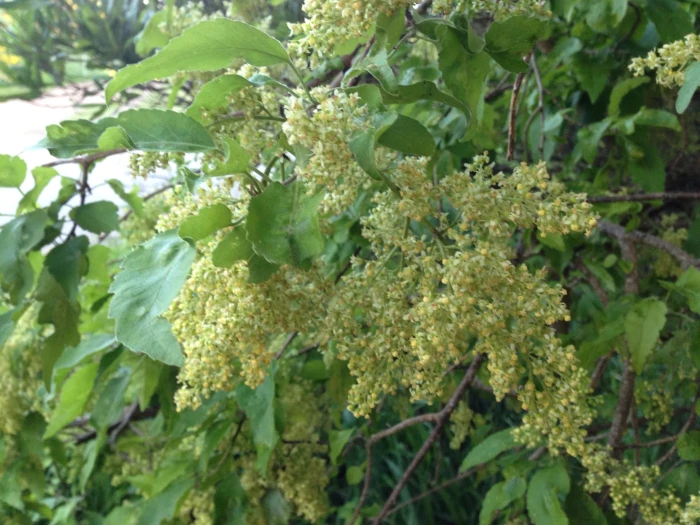Lowland Ribbonwood
(Plagianthus regius)
Lowland Ribbonwood (Plagianthus regius)
/
/

Sarah Richardson
CC BY 4.0
Image By:
Sarah Richardson
Recorded By:
Copyright:
CC BY 4.0
Copyright Notice:
Photo by: Sarah Richardson | License Type: CC BY 4.0 | License URL: http://creativecommons.org/licenses/by/4.0/ | Rights Holder: Sarah Richardson | Publisher: iNaturalist | Date Created: 2017-10-12T06:21:08Z |

























Estimated Native Range
Climate Requirements for Temple, Texas
| This Plant | Your Site | Plant Suitability for Your Location | ||
|---|---|---|---|---|
| • Precipitation | 20" - 143" | 34" | Your precipitation may be insufficient for this plant. Irrigate N" / year. | Irrigate N" / year |
| • High Temp. | 62°F - 78°F | 96°F | Your summers may be too hot for this plant. | Too hot |
| • Low Temp. | 18°F - 47°F | 36°F | Your winter temperatures are normal for this plant | Excellent |
This plant should grow well at your location with about N inches per year (Y minutes per month) of irrigation.
Summary
Plagianthus regius, commonly known as lowland ribbonwood or manatu, is a deciduous tree endemic to New Zealand, particularly found in lowland forests and along river terraces. It can grow up to 56 feet (17 meters) tall and is notable for its bushy juvenile form with interlacing branches that later matures into a more upright and less dense canopy. The tree produces small, inconspicuous white flowers in spring, which are followed by seed capsules that split open to release seeds with a tuft of cotton-like hairs. Lowland ribbonwood is one of New Zealand’s largest deciduous trees and is recognized for its smooth, pale bark that peels away in ribbon-like strips.
Lowland ribbonwood is valued for its fast growth and adaptability to various soil types, though it prefers moist, well-drained soils. It is often used in reforestation projects and as a pioneer species for land rehabilitation due to its hardiness and ability to improve soil quality. In cultivation, it can serve as a specimen tree or be planted in groups for shelterbelts or screening. It requires full sun to part shade and moderate watering. Ribbonwood’s wood was traditionally used by Māori for making textiles and fishing nets. Gardeners should be aware that while it is generally disease-resistant, it can be susceptible to root rot in poorly drained soils.CC BY-SA 4.0
Lowland ribbonwood is valued for its fast growth and adaptability to various soil types, though it prefers moist, well-drained soils. It is often used in reforestation projects and as a pioneer species for land rehabilitation due to its hardiness and ability to improve soil quality. In cultivation, it can serve as a specimen tree or be planted in groups for shelterbelts or screening. It requires full sun to part shade and moderate watering. Ribbonwood’s wood was traditionally used by Māori for making textiles and fishing nets. Gardeners should be aware that while it is generally disease-resistant, it can be susceptible to root rot in poorly drained soils.CC BY-SA 4.0
Plant Description
- Plant Type: Tree
- Height: 10-25 feet
- Width: 5-10 feet
- Growth Rate: Moderate
- Flower Color: Green, White
- Flowering Season: Spring, Summer
- Leaf Retention: Deciduous
Growth Requirements
- Sun: Full Sun
- Water: Medium
- Drainage: Medium
Common Uses
Bird Garden, Border Plant, Butterfly Garden, Deer Resistant, Drought Tolerant, Low Maintenance, Potted Plant, Street Planting
Natural Habitat
Endemic to lowland forests and river terraces in New Zealand
Other Names
Common Names: Ribbonwood, Lowland Ribbonwood
Scientific Names: Plagianthus regius, Betula bella, Betula bella, Plagianthus betulinus var. chathamicus
GBIF Accepted Name: Plagianthus regius